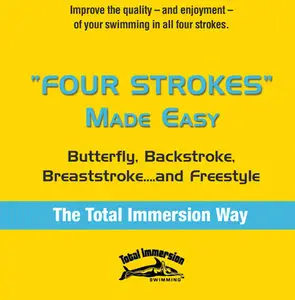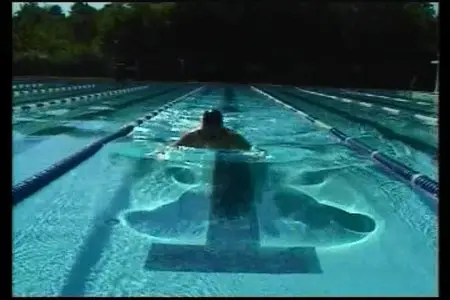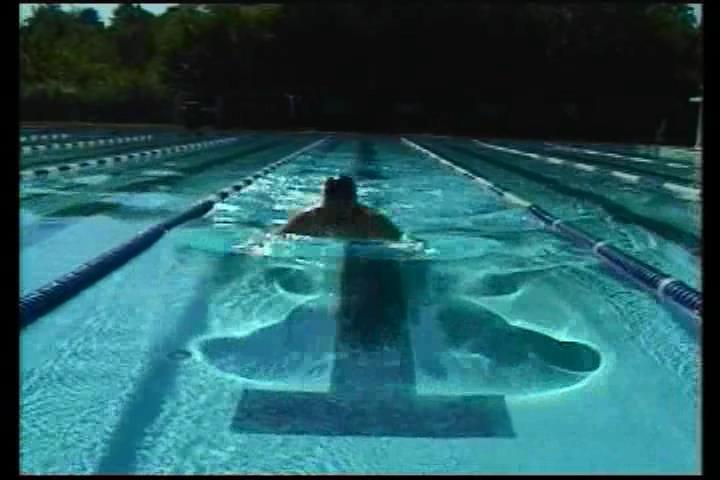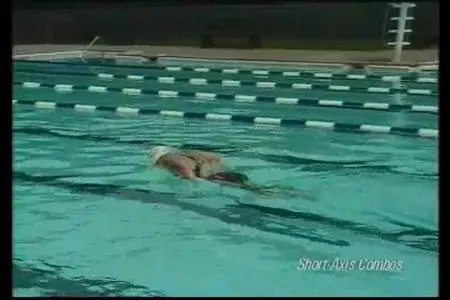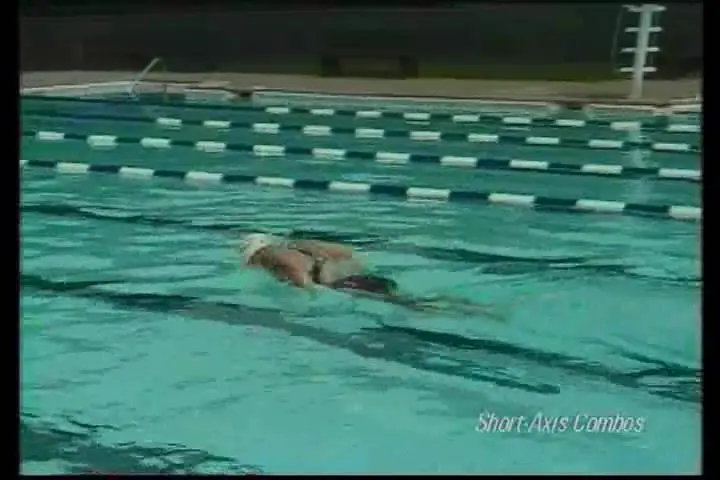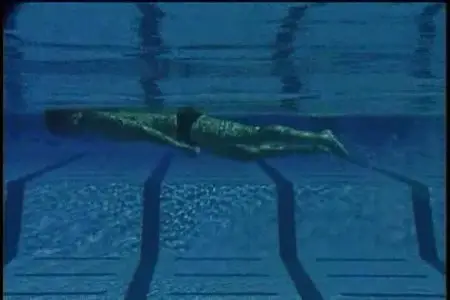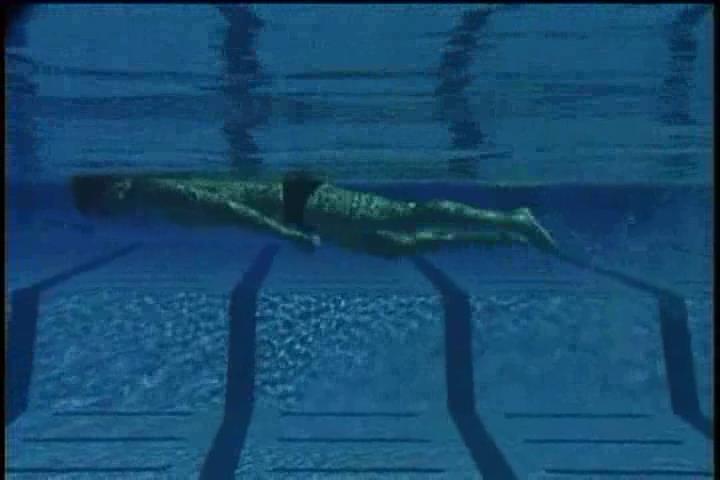Learn To Swim - Total Immersion - Four Strokes Made Easy (1999) (Repost)
DVDRip | English | AVI/DIVX 29.970 fps 780 Kbps | 720x480 | MP3 192 Kbps 44.1 khz | 1h 22mn | 581 MB
Genre: eLearning, Sports
DVDRip | English | AVI/DIVX 29.970 fps 780 Kbps | 720x480 | MP3 192 Kbps 44.1 khz | 1h 22mn | 581 MB
Genre: eLearning, Sports
These are the first-ever videos to identify the key movements and rhythms that link the two long-axis strokes (freestyle and backstroke) and those that unify the two short-axis strokes (breaststroke and butterfly). This unique approach – learning the essentials of two strokes at once – cuts learning time significantly and produces improvement with unprecedented ease and speed. We guarantee it will prove to be one of the most valuable swim-improvement tools you can own.
BUTTERFLY AND BREASTSTROKE: The Total Immersion Way
After teaching thousands of swimmers, we have learned that the key positions and movements that produce flow and ease in both butterfly and breast-stroke are so closely related that they can and should be learned together because they enhance and reinforce each other.
Lesson One: Common Balance and Rotation Drills
Learn to create the essential “wave” movement of breaststroke and butterfly by rhythmically rocking your body, not by kicking, preparing you to swim efficiently and effortlessly, with your whole body, rather than your arms and legs.
Head-Lead Body Dolphin. Learn to undulate your entire body in a supple, relaxed “wave” motion and to use your head to convert a vertical wave into forward momentum. Then add breathing, without interrupting your core-body rhythm.
Hand-Lead Body Dolphin. Learn to use your hands to “lengthen your vessel” and reduce drag.
Pulse To The Corners. Learn to link the “catch” for both fly and breast to core body power.
Lesson Two: Stroke-Integration Drills for Butterfly
Build an efficient, fluent Butterfly stroke from the foundation developed in Lesson One.
Stoneskipper. Learn to maintain a seamless core-body “wave” rhythm as you add the butterfly armstroke, then the butterfly breath.
Body Dolphin Butterfly. Learn a relaxed, sweeping butterfly recovery to complement your seamless undulating core-body rhythm.
EZ Fly. Put the whole stroke together progressively so you avoid practicing “butterstruggle.”
Lesson Three: Stroke-Integration Drills for Breaststroke
Build an efficient, fluent Breaststroke from the foundation developed in Lesson One.
Heads-Up Pulling. Learn to keep your pull compact and your head steady, and to return your hands quickly to full extension.
Two-Pulse Breaststroke. Learn to connect a compact, efficient armstroke skills with your body dolphin and to use your core body as your rhythm and power source.
Two Up, One Down. Link an efficient breast kick to the skills learned previously and to channel your momentum forward.
One Up, One Down. Swim breaststroke with extra emphasis on long, super-streamlined glides in the most slippery position.
Underwater Kick. Improve your kick efficiency by avoiding water resistance.
Two Down, One Up. Learn to slip a long sleek bodyline through the smallest possible hole in the water
Dolphin Breast. Learn to heighten your use of the body dolphin in each stroke cycle and make better use of core-body power.
FREESTYLE AND BACKSTROKE: The Total Immersion Way
As with Breaststroke and Butterfly, the key body positions and movements that produce flow and ease in both freestyle and backstroke are so closely related that they can and should be learned together because they enhance and reinforce each other. (Note: The Freestyle drills on this video are not our most current, the Freestyle Made Easy video should be your source for that. But the Backstroke drills are completely current and the LA Combo drills can be combined with what you learn from the FME video to improve both strokes.)
Lesson One: Head-Lead Balance Drills
These are the fastest way to learn balance and dramatically heighten body awareness. Without your arms to support and stabilize body position, the effect of how you position body parts or distribute your weight and mass is magnified. You understand and learn faster how to achieve optimal position.
Basic Balance Connects you to the water’s energy and what it feels like when the water supports you.
Balance On Your Back Further imprints how you’ll feel when the water supports you.
Head-Lead Sweet Spot Introduces the most important balance position for long-axis strokes, and identifies the exact position in which you’ll start and finish all your long-axis drills.
Active Balance: Looking Up Teaches you to rotate effortlessly from one balance position to another.
Active Balance: Looking Down Establishes the timing and coordination you’ll use in all the drills that follow.
Active Balance: Full Circle Heightens your sense of alignment and “vessel-shaping.”
Lesson Two: Hand-Lead Balance Drills
These take the organic sense of balance taught by head-lead drills and develop your sense of how optimal body position will feel as you swim.
Hand-Lead Sweet Spot – Lengthen Your Vessel Introduces the key position for all subsequent long-axis drills; also the most important balance position for backstroke.
Skating Position The most critical balance exercise for freestyle.
Shark Fin Teaches you to maintain a long, clean, balanced position during the freestyle recovery so you continue slicing forward even when you’re not stroking.
Lesson Three: Stroke-Integration Drills for Freestyle
Build a Fishlike Freestyle from the foundation of skills and habits developed in the common long-axis balance and body-awareness drills.
Stop-Stop-Switch Teaches you to connect your propelling armstroke to your rhythmically rotating core body. Also teaches you the stroke timing that helps you “swim tall” through the entire stroke cycle.
Triple Switch The most seamless transition between freestyle drilling and freestyle swimming.
Single-Arm Freestyle Our special version of single-arm drill uses the same timing and coordination as Stop-Stop-Switch to reinforce key Fishlike Swimming skills: side-balance, a long bodyline, and linking your armstroke to a powerful body roll.
Lesson Four: Stroke-Integration Drills for Backstroke
Build a Fishlike Backstroke from the foundation of the skills and habits developed in the common long-axis balance and body-awareness drills.
Slide And Glide Provides a seamless transition from backstroke drilling to backstroke swimming. Also reinforces a complete, symmetrical, balanced body roll.
Single-Arm Backstroke Links your armstroke to an effortless, complete, symmetrical body roll.
Alternating Single-Arm Backstroke Provides a simple and seamless transition from drilling to swimming.
Lesson Five: Long-Axis Combination Drills
Combine free and back, both drilling and swimming, to make each stroke more fishlike. In both strokes, these drills build a stronger instinct for slipping a long, sleek, vessel through a tiny "hole" in the water.
Sweet-Spot Combo Reinforces the common balance and alignment in freestyle and backstroke.
LA-Combo Swimming Fully integrates both strokes to make them longer and more slippery, and to maximize body roll.
LA-Combo Single Arm Provides the highest-order skill and coordination challenge of all LA Combo drills and completely integrates the armstroke with core-body rotation and rhythm.
General
Complete name : Learn To Swim - Total Immersion - Four Strokes Made Easy.avi
Format : AVI
Format/Info : Audio Video Interleave
File size : 581 MiB
Duration : 1h 22mn
Overall bit rate : 984 Kbps
Video
ID : 0
Format : MPEG-4 Visual
Format settings, BVOP : No
Format settings, QPel : No
Format settings, GMC : No warppoints
Format settings, Matrix : Default (H.263)
Codec ID : DX50
Codec ID/Hint : DivX 5
Duration : 1h 22mn
Bit rate : 780 Kbps
Width : 720 pixels
Height : 480 pixels
Display aspect ratio : 3:2
Frame rate : 29.970 fps
Standard : NTSC
Color space : YUV
Chroma subsampling : 4:2:0
Bit depth : 8 bits
Scan type : Progressive
Compression mode : Lossy
Bits/(Pixel*Frame) : 0.075
Stream size : 461 MiB (79%)
Writing library : DivX 5.1.1 (Maupiti) (UTC 2003-11-19)
Audio
ID : 1
Format : MPEG Audio
Format version : Version 1
Format profile : Layer 3
Codec ID : 55
Codec ID/Hint : MP3
Duration : 1h 22mn
Bit rate mode : Constant
Bit rate : 192 Kbps
Channel(s) : 2 channels
Sampling rate : 44.1 KHz
Compression mode : Lossy
Delay relative to video : 26ms
Stream size : 113 MiB (20%)
Alignment : Split accross interleaves
Interleave, duration : 33 ms (1.00 video frame)
Title : Audio Stream
Complete name : Learn To Swim - Total Immersion - Four Strokes Made Easy.avi
Format : AVI
Format/Info : Audio Video Interleave
File size : 581 MiB
Duration : 1h 22mn
Overall bit rate : 984 Kbps
Video
ID : 0
Format : MPEG-4 Visual
Format settings, BVOP : No
Format settings, QPel : No
Format settings, GMC : No warppoints
Format settings, Matrix : Default (H.263)
Codec ID : DX50
Codec ID/Hint : DivX 5
Duration : 1h 22mn
Bit rate : 780 Kbps
Width : 720 pixels
Height : 480 pixels
Display aspect ratio : 3:2
Frame rate : 29.970 fps
Standard : NTSC
Color space : YUV
Chroma subsampling : 4:2:0
Bit depth : 8 bits
Scan type : Progressive
Compression mode : Lossy
Bits/(Pixel*Frame) : 0.075
Stream size : 461 MiB (79%)
Writing library : DivX 5.1.1 (Maupiti) (UTC 2003-11-19)
Audio
ID : 1
Format : MPEG Audio
Format version : Version 1
Format profile : Layer 3
Codec ID : 55
Codec ID/Hint : MP3
Duration : 1h 22mn
Bit rate mode : Constant
Bit rate : 192 Kbps
Channel(s) : 2 channels
Sampling rate : 44.1 KHz
Compression mode : Lossy
Delay relative to video : 26ms
Stream size : 113 MiB (20%)
Alignment : Split accross interleaves
Interleave, duration : 33 ms (1.00 video frame)
Title : Audio Stream
Screenshots


